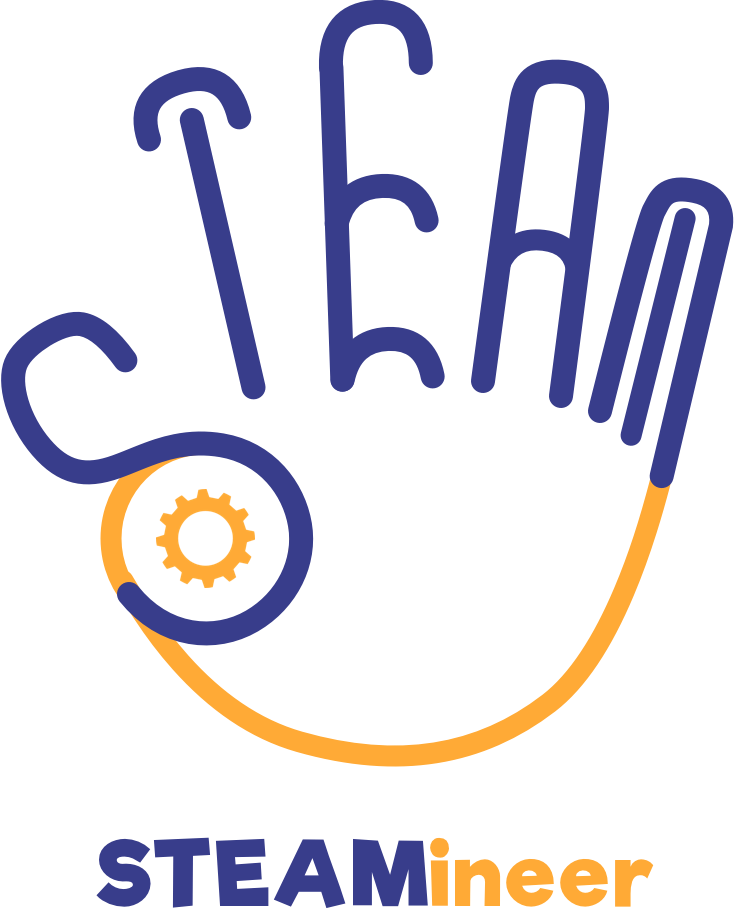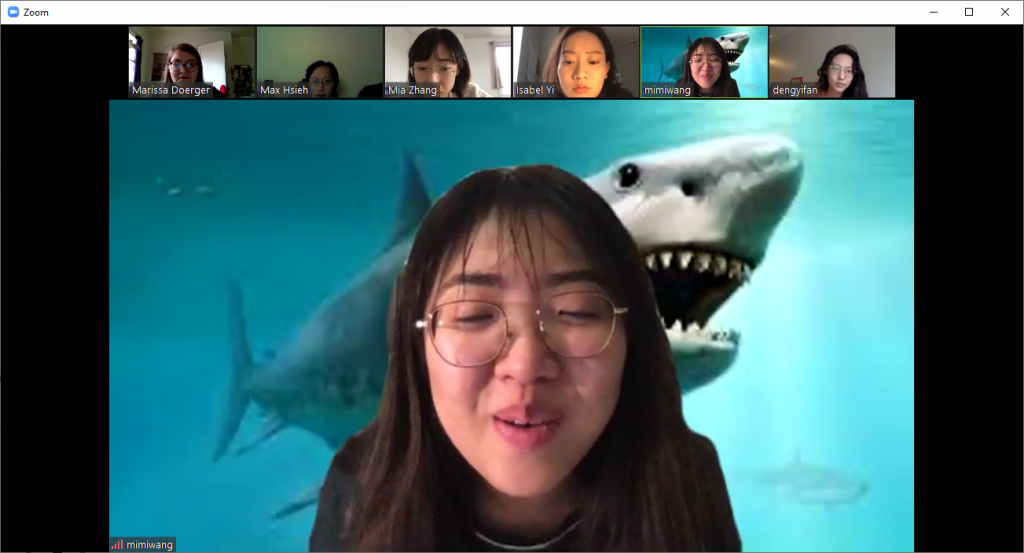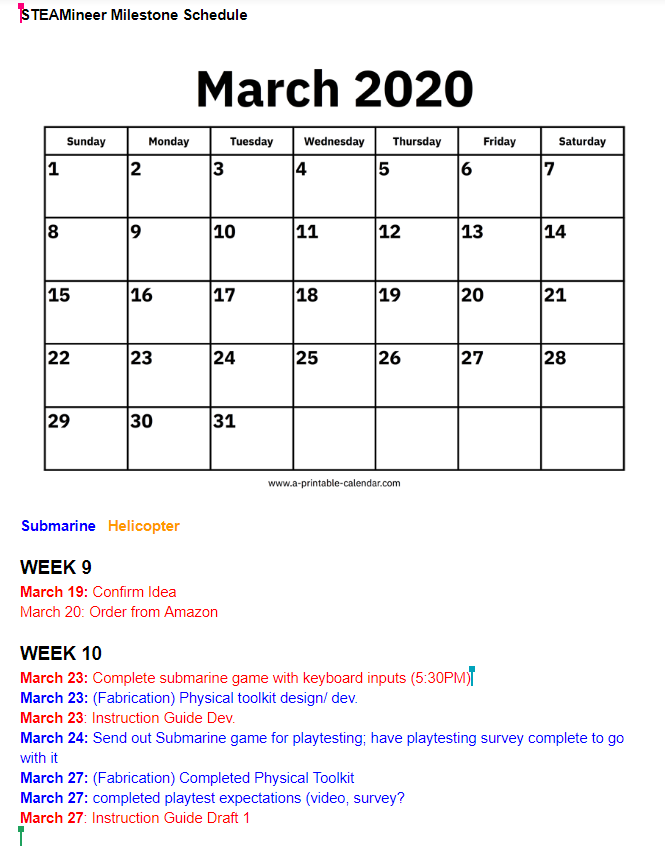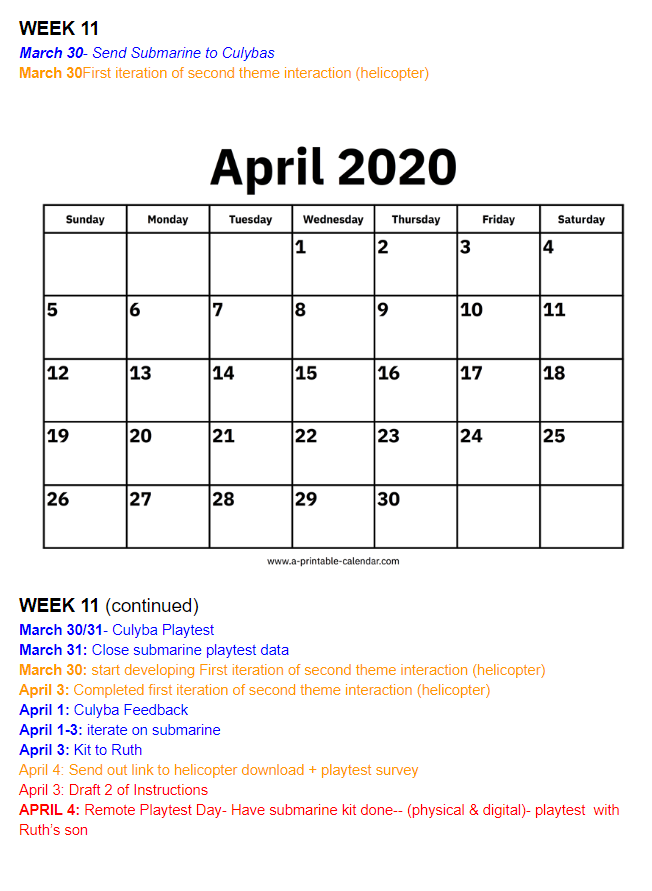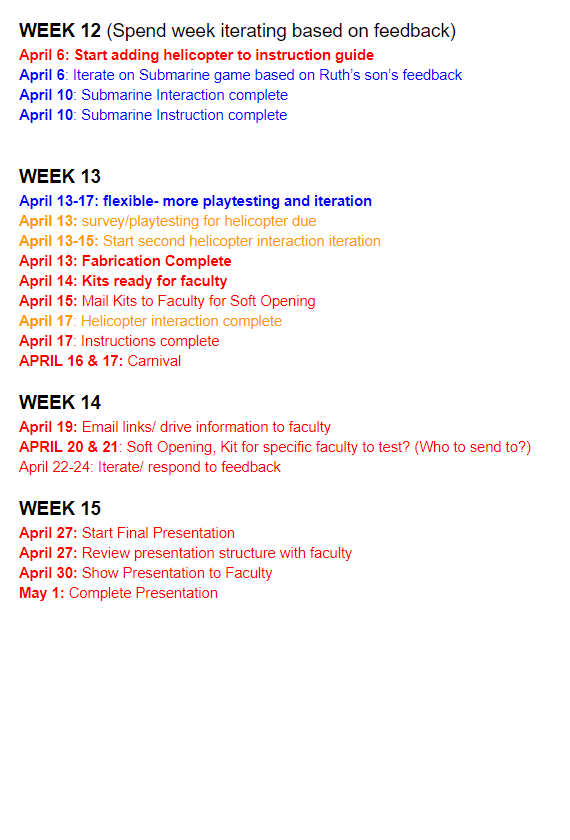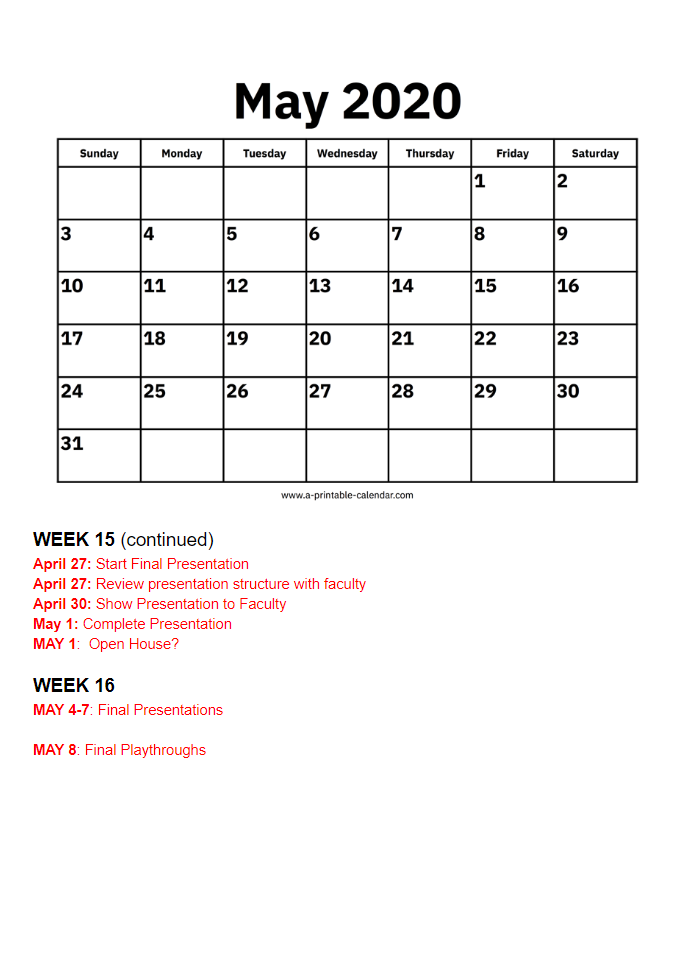Team STEAMineer returned from Spring Break to different project circumstances. In response to the COVID-19 pandemic, all CMU coursework has been moved to remote work, including ETC projects.
Going forward, Team STEAMineer will no longer be working out of room 3216 at the ETC, but instead we will be working individually in our homes in order to practice social distancing. On Wednesday we were able to collect our personal belongings as well as our desktop computers from the ETC for use at home the remainder of the semester.
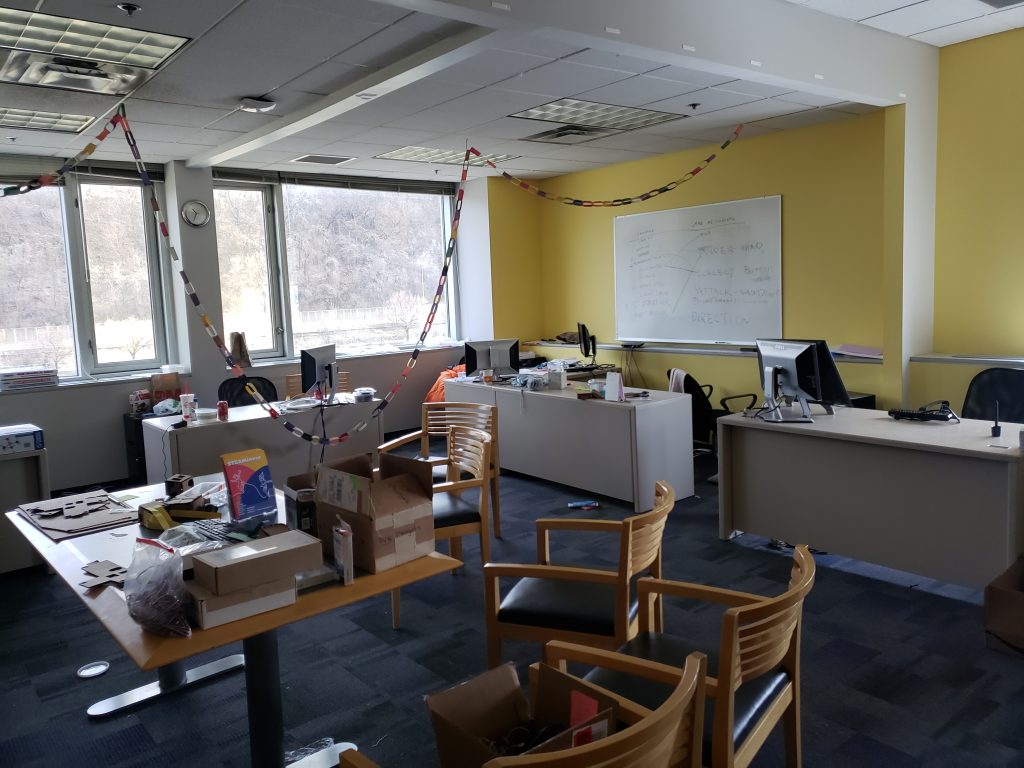
Our team meetings, faculty meetings, and presentations will occur via video conferencing. At the beginning of our core hours everyday, we have stand-up meetings via Zoom. Throughout our core hours, we are sending updates and reaching out to one another via Slack. And when the workday ends, we notify our colleagues by signing out of Slack. We also use Slack to update one another of our work outside of core hours.
Monday we had our first remote team meeting to check in with everyone and ensure we had the necessary technology. In light of everything going on with COVID-19, our team was okay and eager to talk with our advisers to identify our next steps. Unfortunately, with closures of “non-essential” businesses in Allegheny County, our partner, Assemble, is closed for at least the remainder of the month. However, we realized that because we are hoping to create something kids can create with help from a facilitator, and since lots of students are home with family members in order to social distance, we may be able to access an audience for playtesting. The new approach would require us adapting our instructions to better support a family or an adult and a child as opposed to a camp class. Furthermore, testing our instructions and equipment remotely gives us an opportunity to verify if what we are creating and communicating is effective. Following our Monday meeting we spent Tuesday and Wednesday setting up our home offices.
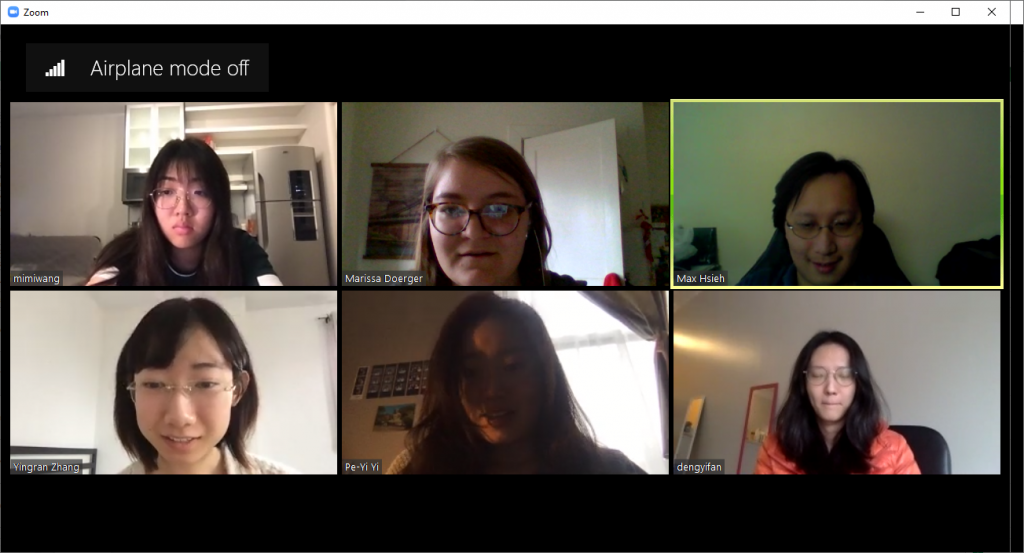
Wednesday we had our long-awaited meeting with our advisers. It was our first chance to speak with them via video conferencing since the announcement that we would no long be meeting in person. The meeting gave us the opportunity to verify our idea of changing our audience to children and caretakers at home. It also gave us the opportunity to learn more about what purchasing supplies and playtesting would mean, as well as expectations moving forward.
With our advisers’ blessing, we focused our attention on our new audience. The remaining question on our minds was how we would playtest. Dave volunteered himself and his daughter as the first playtesters for our new activity. For future playtests we will be reaching out to people in the community that we know who are home with kids. We created a description of our ideal playtesting audience that includes requirements for either live-streaming or recording their playtesting experience to allow the team to collect data. We are also hoping to have initial playtests with families familiar with Arduino microcontrollers. With the changes in our day to day operations, the expectations of the number of playtests we can conduct has also changed. Instead of playtesting weekly, we are hoping to get one family outside of the ETC to test out our experience. Lastly, Dave encouraged us to find an online game we could play together to achieve some of the camaraderie we experience by working in the same room together. To ensure effective communication and help our project succeed with the new circumstances, we are now meeting with our faculty twice a week.
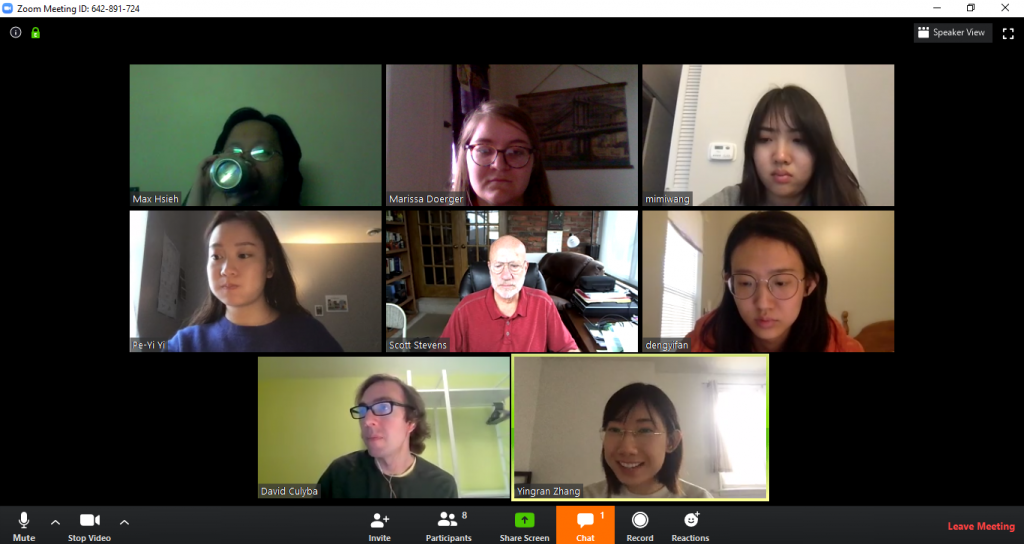
Perhaps the biggest impediment to our development process has been the loss of the laser cutter and 3D printer as resources at the ETC. Mia has utilized the laser cutter to create precise templates for the controller bases students have been building. We were eager to use the 3D printer to create capsules that could fit snugly around the Arduino inputs, like those in the Code Gamer kit, in order to better protect the technology. From our past playtests, we also learned that students liked the character design of the capsules. Mia was ready to respond to the new situation. She came to our meeting on Monday with links to pre-cut kits available on Amazon. The model kits are made out of thin wood and the pieces can be punched out and assembled into a three dimensional object like a car or submarine.
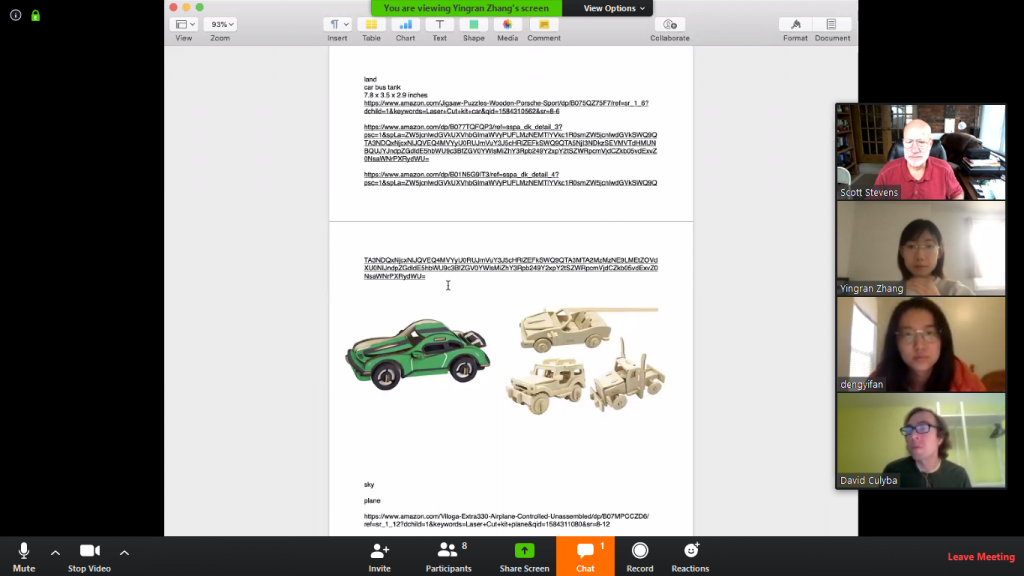
Her goal is to modify these elements to hold an Arduino Uno Microcontroller with six inputs attached. The Arduino and its connections will be contained in the casing Mia creates, and this “core” will be added to a larger object with spaces for the inputs to be positioned. The purpose of the core is to protect the Arduino and to maintain the proper connections between the inputs and the microcontroller, especially if we mail them out to our playtesters. If the kits can’t be modified, we may create paper templates playtesters could replicate by printing them out and tracing them at home.
Thursday, we had our first check in, and it ultimately ended up being a longer meeting to focus on prioritizing the goals of project. As a team we have been considering adding different themes and different games to our experience to give students more options. Max brought up working on developing a helicopter interaction and shared a graphic of the game with the team. However, upon further evaluation, we decided to focus our efforts on polishing the submarine game. Max was tasked with creating a version of the game that would support keyboard inputs. Yifan, with help from Mia and Marissa, took charge on the UI interfaces for the game. Mimi and Isabel planned to tag team the story for the submarine interaction. Based on a recommendation from our playtesters, we are focusing on a journey to revive Atlantis. Polishing the game better supports playtesters who would be playing the game without one of our teammates nearby for support. Following the polishing of the game, we could start allowing people to playtest it at home and then start work on a different game interaction.
Thursday Isabel and Marissa planned out a schedule for the remainder of the semester with new milestones based on the new project audience. We plan to have a rough prototype of everything for the submarine interaction complete by March 30th for a playtest with the Culyba family at the end of March. Our goal is to have everything– instructions, hardware, pre-fabricated materials, digital game– for the submarine game complete by Friday, April 3rd. We intend to launch the keyboard version of our second interaction for playtesting April 4th. After a week of online testing, we will iterate based on feedback so that it is ready for Soft Opening April 20 & 21st. With the feedback from Softs, we will spend the remainder of the semester polishing our interaction and preparing for final presentations.
Friday we organized the necessary materials for prototyping the pre-fabricated components. We also ordered enough Arduino Unos, inputs, and hardware for five playtesting kits. We set up a workflow, so Mimi will load the programming and games onto the Arduinos and plug in the sensors before dropping off the electronics to Mia. Mia will fabricate the core (to house the Arduino and the connections between the inputs and the Arduino). Mia will also assemble the materials for the outer structure the core will fit in. The outer structure will be built by our playtesters and have ports for them to set up the inputs they select for particular interactions.
We have reached out to Assemble and are currently re-evaluating what our relationship will be in the future.
Check back next week as we continue to adapt and find best practices for functioning like a well-oiled, remote machine. We will also be launching a version of our submarine game that can be played on your computer with no Arduino. If you’re interested, download it and give it a try!
We appreciate all the help the ETC and CMU have offered as we adjust to our new circumstances. On behalf of our team, we would also like to wish everyone well as we all find ways to support one another.
